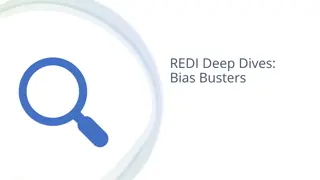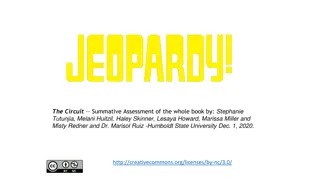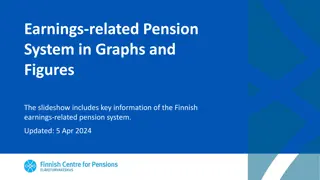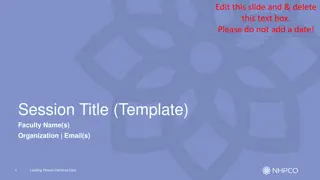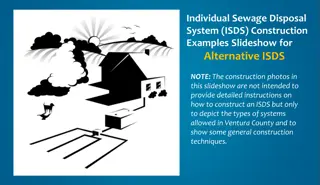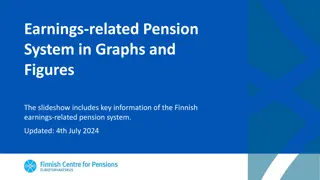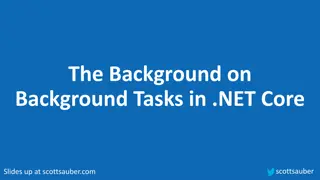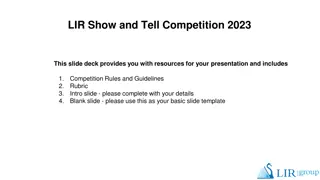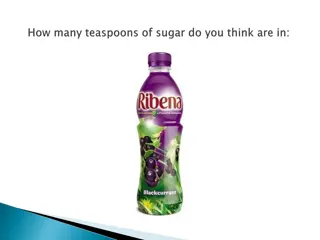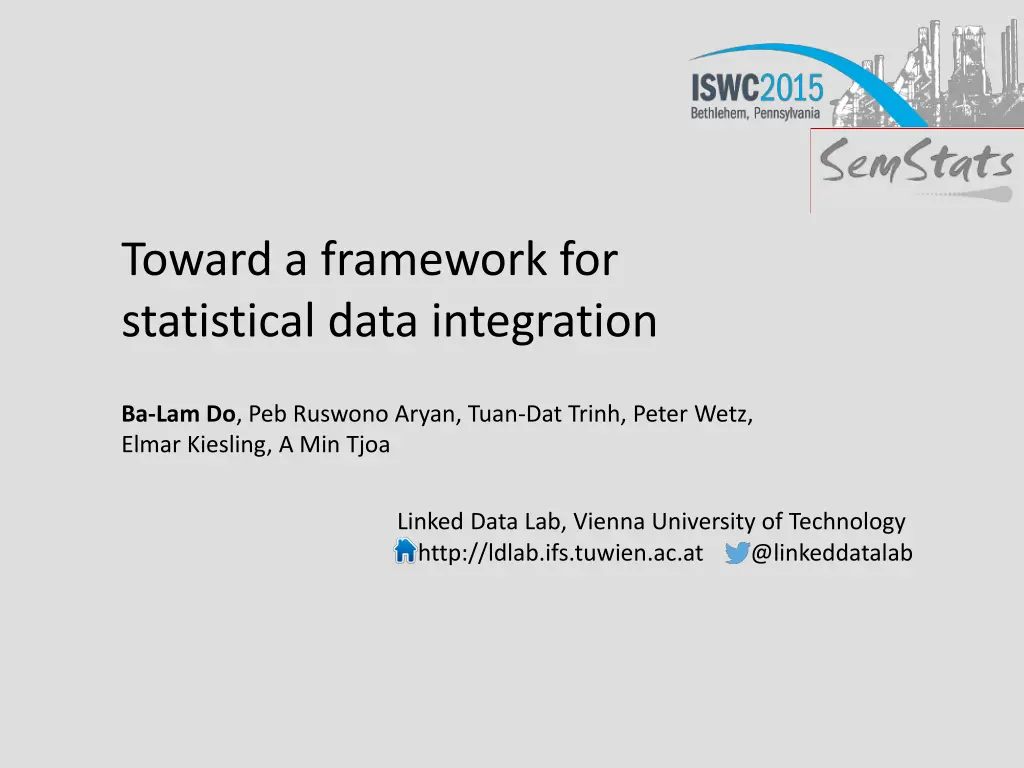
Statistical Data Integration Framework
Towards creating a framework for statistical data integration, this work addresses the challenges of integrating statistical data efficiently. The framework proposes solutions for consolidating data formats, utilizing RDF, SPARQL queries, and standard vocabulary adoption. Various components such as RML mapping services, metadata repositories, and mediators are key to the integration approach. An example use case involving comparing UK population data from different sources is presented, showcasing the practical application of the framework.
Download Presentation

Please find below an Image/Link to download the presentation.
The content on the website is provided AS IS for your information and personal use only. It may not be sold, licensed, or shared on other websites without obtaining consent from the author. If you encounter any issues during the download, it is possible that the publisher has removed the file from their server.
You are allowed to download the files provided on this website for personal or commercial use, subject to the condition that they are used lawfully. All files are the property of their respective owners.
The content on the website is provided AS IS for your information and personal use only. It may not be sold, licensed, or shared on other websites without obtaining consent from the author.
E N D
Presentation Transcript
Toward a framework for statistical data integration Ba-Lam Do, Peb Ruswono Aryan, Tuan-Dat Trinh, Peter Wetz, Elmar Kiesling, A Min Tjoa Linked Data Lab, Vienna University of Technology http://ldlab.ifs.tuwien.ac.at @linkeddatalab
Introduction Data Integration Framework Use Case Conclusion and Future Work Agenda Introduction Data Integration Framework Use case Conclusion and Future Work 2 Toward a framework for statistical data integration
Introduction Data Integration Framework Use Case Conclusion and Future Work Problem Statement Statistical data is growing fast opens up opportunities for interesting applications But: it is difficult to integrate statistical data due to diversity in access mechanisms inconsistencies in vocabulary and entity naming limited adoption of existing standards Data Cube Vocabulary 3 Toward a framework for statistical data integration
Introduction Data Integration Framework Use Case Conclusion and Future Work Integration Approach Propose a framework for statistical data integration based on: Consolidation of Data format: RDF Access mechanism: SPARQL query Standard adoption: vocabulary - Data cube vocabulary property, code list SDMX s content-oriented guidelines (COG) Components 1. RML mapping service: transforms data from non-RDF formats to RDF format 2. Metadata repository: uses standards to provide interconnection between data sets 3. Mediator: queries and integrates data 4 Toward a framework for statistical data integration
Introduction Data Integration Framework Use Case Conclusion and Future Work Example use case Compare the population of the UK according to three different data sources 5 Toward a framework for statistical data integration
Introduction Data Integration Framework Use Case Conclusion and Future Work Architecture 6 Toward a framework for statistical data integration
Introduction Data Integration Framework Use Case Conclusion and Future Work RML Mapping Service RML (RDF Mapping Language) transform data from non-RDF formats into RDF format supported formats: JSON, XML, CSV, TSV Our service RML Mapping Service Mappings to RDF following Data cube vocabulary RDF URI JSON XML TSV CSV Data set Our extensions XLS format support parameterized RML mappings: variables in mapping e.g., country code, indicators 7 Toward a framework for statistical data integration
Introduction Data Integration Framework Use Case Conclusion and Future Work Two main parts in structure of metadata 1. Structure and access method for the data set represent components in each data set represent method to query this data set: SPARQL, API, and RML mapping 2. Co-reference information: links each component/value to its corresponding identifier use properties in COG: sdmx-d:refArea,sdmx-m:obsValue use code lists in COG: code list of sdmx-d:sex define new code lists which are not available in COG: spatial values (use Google Geo coding service) and temporal values (use UK time reference service) 8 Toward a framework for statistical data integration
Introduction Data Integration Framework Use Case Conclusion and Future Work Structure of Semantic Metadata Metadata WB s indicators Co-reference property Sparql, Api, Rml Co-reference value 9 Toward a framework for statistical data integration
Introduction Data Integration Framework Use Case Conclusion and Future Work Issue with COG Issue COG has only one measure property, sdmx- m:obsValue Measurea Measureb loss of meaning of observed measure querying and integrating data is difficult a data set can have multiple measures Approach use World Bank s indicators as topic set assign topic to each data set split a multi-measure data set into multiple single-measure data sets DSa DSb sdmx-m:obsValue Measureb Measurea sdmx-m:obsValue Topicb Topica RDF RDF 10 Toward a framework for statistical data integration
Introduction Data Integration Framework Use Case Conclusion and Future Work Inconsistent Number of Dimensions Inconsistent number of dimensions in each data set WB, UK data sets: 2 dimensions EU data set: 5 dimensions Approach identify a fixed value (if any) for each dimension value: unique or aggregated value assign dimensions that do not appear in both data sets with their fixed values 11 Toward a framework for statistical data integration
Introduction Data Integration Framework Use Case Conclusion and Future Work Mediator 12 Toward a framework for statistical data integration
Introduction Data Integration Framework Use Case Conclusion and Future Work Mediator Input: a SPARQL query uses consolidated properties/values Query Acceptance Identify suitable data sets in the repository Rewrite the input query based on co-reference information Send queries to SPARQL endpoints or RML mapping service Query Rewriting Rewrite each result based on co-reference information Apply filter conditions to each result Consolidate different units/scales to a common unit/scale Integrate results Result Rewriting Output: Return integrated result to user/application Return Result 13 Toward a framework for statistical data integration
Introduction Data Integration Framework Use Case Conclusion and Future Work Role of Stakeholders 1. Data providers publish data in varying formats create RML mapping to transform their data from non-RDF formats to RDF format 2. Developers build innovative data integration applications create RML mapping for their interest data sets 3. End users lack semantic web knowledge and programming skills use appropriate tools to generate SPARQL queries, compare, and visualize data 14 Toward a framework for statistical data integration
Introduction Data Integration Framework Use Case Conclusion and Future Work Requirements for Statistical Data Integration Principles Object: two single-measure data sets Comparison: based on the co-reference identifiers of data sets Requirements of data structure They have the same sets of dimensions,same measure, and same topic They have the same sets of dimensions, same measure, but different topics They have the same measure and same topic. We can use fixed values to assign dimensions that do not appear in both data sets Requirement of value: same values 15 Toward a framework for statistical data integration
Introduction Data Integration Framework Use Case Conclusion and Future Work Example: data integration requirements World Bank UK EU 16 Toward a framework for statistical data integration
Introduction Data Integration Framework Use Case Conclusion and Future Work Mediator PREFIX qb: <http://purl.org/linked-data/cube#> SELECT * WHERE { ?ds dc:subject <http://data.worldbank.org/indicator/SP.POP.TOTL>. ?o qb:dataSet ?ds. ?o sdmx-m:obsValue ?obsValue. ?o sdmx-d:refPeriod ?refPeriod. ?o sdmx-d:refArea ?refArea. Filter(?refArea=<http://linkedwidgets.org/statisticalwidgets/ontology/geo/UnitedKin gdom>)} Query Acceptance Query Rewriting Result Rewriting Return Result 17 Toward a framework for statistical data integration
Introduction Data Integration Framework Use Case Conclusion and Future Work Mediator SELECT * WHERE { FILTER(?refArea= <http://dd.eionet.europa.eu/vocabulary/eurostat/geo/UK>) } ?o qb:dataSet <http://rdfdata.eionet.europa.eu/eurostat/data/demo_pjanbroad>. ?o sdmx-m:obsValue ?obsValue. ?o sdmx-d:timePeriod ?timePeriod. ?o sdmx-d:refArea ?refArea. ?o sdmx-d:freq <http://purl.org/linked-data/sdmx/2009/code#freq-A>. ?o sdmx-d:age <http://dd.eionet.europa.eu/vocabulary/eurostat/age/TOTAL>. ?o sdmx-d:sex <http://purl.org/linked-data/sdmx/2009/code#sex-T>. Query Acceptance Query Rewriting EU data set query Result http://pebbie.org/mashup/rml?rmlsource=http://pebbie.org/mashup/rml- source/wb&subject=http://data.worldbank.org/indicator/SP.POP.TOTL&refArea=http: //pebbie.org/ns/wb/countries/GB Rewriting WB data set query Return http://pebbie.org/mashup/rml?rmlsource=http://pebbie.org/mashup/rml- source/ons_pop Result UK data set query 18 Toward a framework for statistical data integration
Introduction Data Integration Framework Use Case Conclusion and Future Work Mediator Rewrite each result based on co-reference information Query http://dd.eionet.europa.eu/vocabulary/eurostat/geo/UK => http://linkedwidgets.org/statisticalwidgets/ontology/geo/UnitedKingdom http://pebbie.org/ns/wb/countries/GB => http://linkedwidgets.org/statisticalwidgets/ontology/geo/UnitedKingdom 2014^^http://www.w3.org/2001/XMLSchema#year => http://reference.data.gov.uk/id/gregorian-year/2014 2014 => http://reference.data.gov.uk/id/gregorian-year/2014 Acceptance Query Rewriting Result Apply filter conditions (refArea UK) to results Consolidate scales in three results EU and WB data sets: absolute number scaling UK data set: millions scale => multiply one million Integrate results Rewriting Return Result 19 Toward a framework for statistical data integration
Introduction Data Integration Framework Use Case Conclusion and Future Work Mediator Query Acceptance Query Rewriting Result Rewriting XML format JSON format Return HTML format Result 20 Toward a framework for statistical data integration
Introduction Data Integration Framework Use Case Conclusion and Future Work Conclusion A framework for statistical data integration RML mapping service transforms data into RDF Semantic metadata repository provides interconnection between data sets Mediator facilitates cross-datasets querying Preliminary results RML mapping service supports CSV, XML, TSV, JSON, XSL formats Repository focus on properties: sdmx-d:refArea, sdmx-d:refPeriod, sdmx-d: sex, sdmx-m:obsValue generated semi-automatically Mediator allows simple queries 21 Toward a framework for statistical data integration
Introduction Data Integration Framework Use Case Conclusion and Future Work Future Work RML Mapping Service support users to create RML mappings Repository increase the number of data sources split integrated properties/values into separated properties/values consider to reuse available properties/code list from data publishers Mediator support complex queries Framework evaluate the performance of the framework 22 Toward a framework for statistical data integration
Introduction Data Integration Framework Use Case Conclusion and Future Work Thank you very much for your attention! Contact: Ba-Lam Do Linked Data Lab Vienna University of Technology, Austria http://ldlab.ifs.tuwien.ac.at lam@ifs.tuwien.ac.at 23 Toward a framework for statistical data integration






